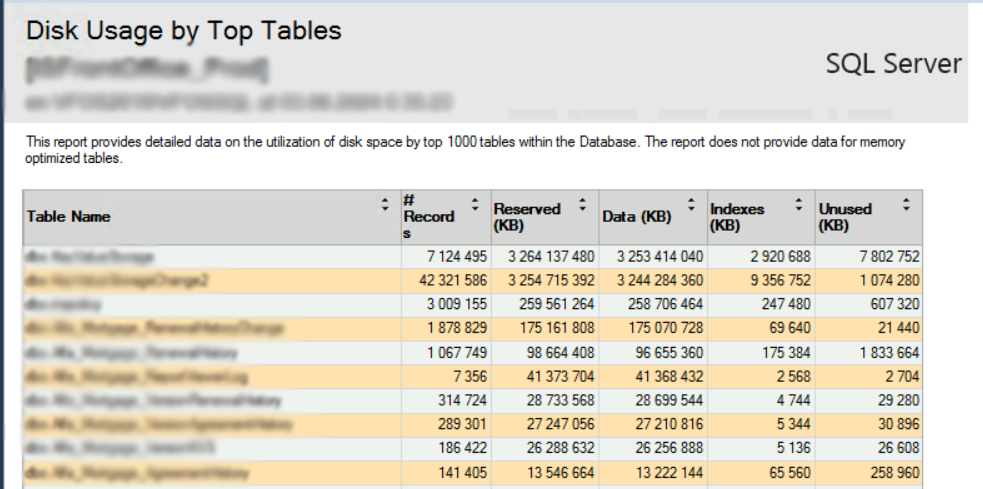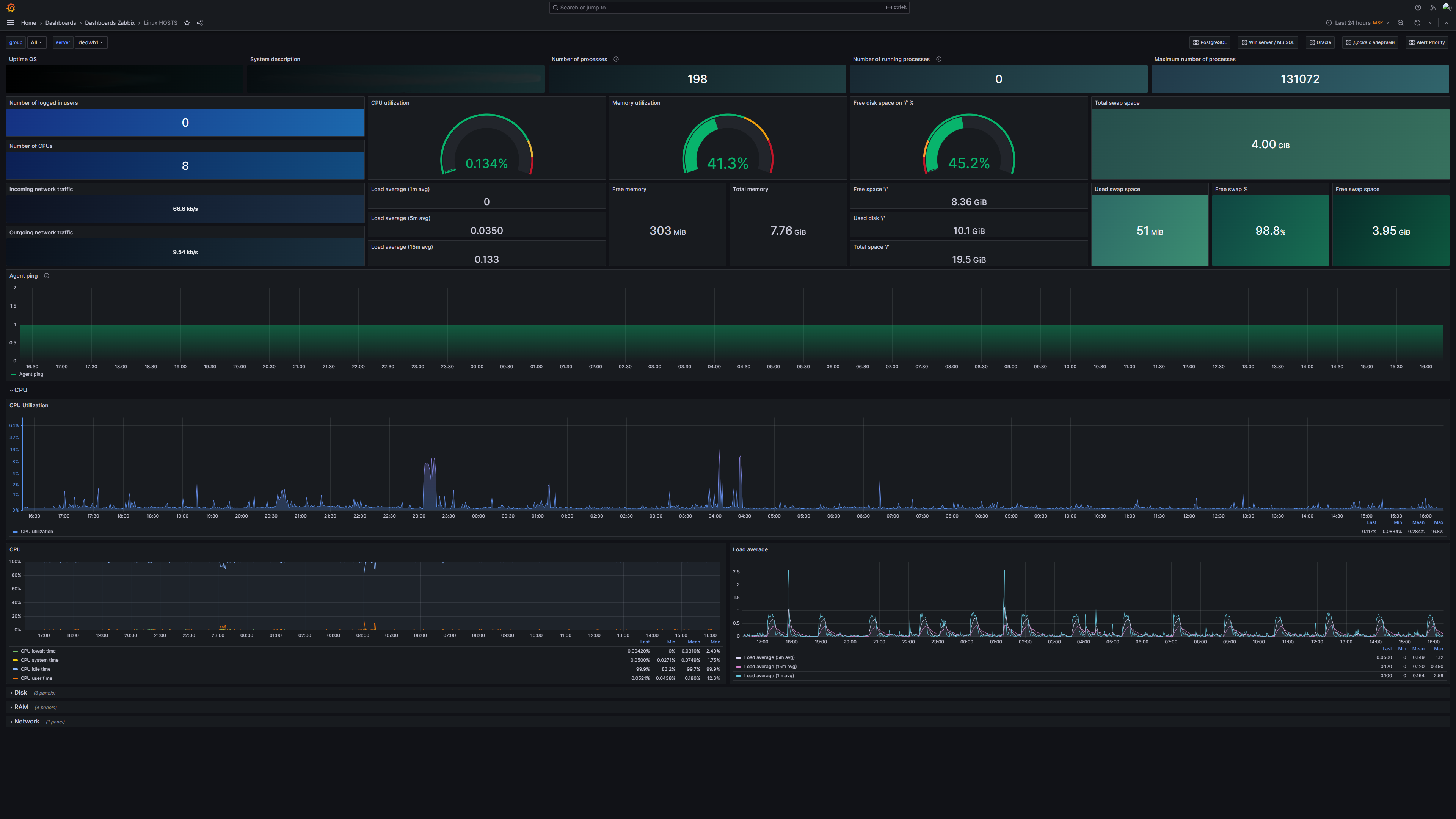Database Monitoring Services
Database Monitoring is a critical aspect of managing information systems in modern companies.
The efficiency of this process directly impacts the performance, security, and availability of data — key elements for business success.
Database monitoring is a comprehensive process of continuously observing the state and performance of the server, the database management system (DBMS) instance, and the databases hosted on it. It also involves examining what’s happening inside or around the database, such as locks, backups, replication status, transaction counts, or the duration of inactive transactions that may hinder autovacuum processes. For newcomers to the field or non-DBA professionals, databases often appear to be a “black box.” Many use them but don’t fully understand how they operate.
When working with databases, your DBA has numerous tasks to manage. Monitoring databases under heavy load often means only responding to incidents and clear anomalies. Minor database events, or fluctuations, which signal system instability and potential issues emerging a month down the line, often go unnoticed. Thus, monitoring is frequently handled by a dedicated team, which may lack DBA expertise.
Monitoring involves collecting, analyzing, and interpreting data on database operations to ensure stability and to identify and address potential issues in a timely manner. Monitoring can prevent failures, improve performance, and ensure compliance with established standards and requirements only when those working with it understand how the DBMS functions. This is exactly what we offer—our support staff, from first-line (entry-level) to third-line (expert-level), have a clear understanding of the systems they work with.
We offer clients a customized, non-standard monitoring solution based on Zabbix software, which includes not only standard OS and DBMS metrics but also a wide range of additional parameters that track specific processes within the DBMS. This is our proprietary solution, developed from years of database administration experience, incident support, and proactive issue prediction and prevention.
Our tool has been in use since 2008 and has been meticulously refined through continuous practice, lessons learned, and methodological improvements. We introduce unique metrics that enable us to deliver the most accurate analysis of your system’s performance.
How has our monitoring evolved over 15 years? Following each incident, we initiate a task to analyze why the situation was not monitored and assess if monitoring improvements are possible. If enhancements can be made, these changes are planned and implemented as a standard process within the DBServ team.
Our solution is unique in the market. For example, we offer backup monitoring at the level of the last full backup date or differential backup size. This system alerts when a full backup hasn’t been done for a specified number of days.
What does a differential backup size trigger provide? It alerts that large-scale data changes have occurred and that a full backup may be due. If this trigger activates too often, it’s worth investigating potential causes, possibly revisiting backup policies.
Similarly, we monitor slave (standby) database lag, checking if it is functioning correctly and is up-to-date. Frequent lag indicates issues that require specialist intervention. We monitor major databases like PostgreSQL, Oracle, MSSQL and MySQL — with specific metrics and items tailored for each.

Key Aspects of Database Monitoring and Maintenance
1. Monitoring the Current State of the Database
Regularly checking database health helps ensure operational stability and data integrity. This includes verifying database availability, checking for sufficient free space, and assessing the state of components (e.g., free sections in partitioned tables). Issues with database status can lead to downtime and data loss, which are unacceptable for any business.
3. SQL Query Monitoring
SQL query analysis helps identify queries that cause unusual performance metrics, such as excessive resource usage. This enables prompt responses to queries that might overload the system, allowing for optimization in their execution.
2. Performance Monitoring
Database performance monitoring includes analyzing response time, CPU load, memory usage, and disk subsystem activity. By identifying bottlenecks and optimizing database operations, performance monitoring helps avoid potential downtimes and enhances overall system efficiency. It also enables clients to understand the current functional limitations.
4. Historical Data Analysis
Analyzing historical data allows for tracking database growth trends, which is essential for forecasting future growth and resource needs. Historical data analysis includes:
- Disk Space Forecasting. Estimating when available disk space will be exhausted at the current rate of data growth.
- Data Growth Analysis. Identifying the largest tables and indexes to recommend compression or optimization, rather than suggesting additional storage as the first solution. At DBServ, our priority is on optimization before purchasing additional server space.
- Visual Data Presentation for Scaling/Optimization. All data collected is presented to clients in reports and charts, providing a clear understanding of the analysis before scaling or optimization decisions are made.

Annual growth chart

TOP-10 spreadsheets
5. Automation of Database Operations
Routine database management tasks, such as cleanup, index rebuilding, and table compression, should be automated. This reduces manual workload and minimizes the risk of human error, enhancing overall database reliability and efficiency.
6. Timely Updates
Installing updates promptly is essential due to software aging and the release of new features. Updates keep the system current and enhance functionality. Additionally, it’s sometimes necessary to plan for an upgrade to a new DBMS version to take advantage of improved capabilities and long-term support.
How the Monitoring Process Works for the Client

Support Team
Our 24/7 support team uses the Zabbix UI to analyze all monitored metrics, ensuring rapid response to incidents and system stability.
Monitoring via Zabbix Proxy
At the client’s site, databases of various types—PostgreSQL, Oracle, MSSQL—are installed with Zabbix agents, which collect data on system performance. This data is securely transferred over VPN to the Zabbix Proxy, where it’s processed and sent to the Zabbix Server through an SSL-encrypted connection.
Central Monitoring Server (Zabbix Server)
The Zabbix Server, hosted in a cloud environment (AWS), aggregates data from the Zabbix Proxy. InfluxDB stores historical data, while PostgreSQL handles current data management.
Client Access and Visualization
Clients access Zabbix through an SSL connection, with pre-configured dashboards showing critical database indicators. We provide necessary user access and configure system accounts for connection to Grafana or another visualization tool, allowing you to review collected data independently if desired.
The Zabbix agent doesn’t transmit client data from the database itself; instead, it provides status information, including database health, lock states, resource-intensive processes, replication status, and dispatcher status. Your data remains secure on your systems. We offer an agent installer that can be verified by any available antivirus software, and clients can install it themselves or have us handle it.
We receive only the necessary monitoring data on our server, so you don’t need to allocate additional resources. The agent sends data exclusively to the proxy, so servers remain isolated from external access, with communication managed through a proxy server under your control. Zabbix supports TLS encryption for secure communication between components. All transmission occurs within a VPN.
System health metrics are displayed via the Grafana dashboard, providing a user-friendly interface for visualizing key database performance indicators.

Why Database Monitoring is a Complex Service
Database monitoring is more than a technical task — it’s a multifaceted service requiring substantial knowledge and experience. It includes:
✅ Proactive Approach
Effective monitoring is proactive, allowing issues to be detected before they become critical. This requires in-depth data analysis and predictive insight into potential failures.
✅ Technical Complexity
Modern databases have intricate architectures and high resource demands. Monitoring requires an understanding of the internal workings of DBMS and component interactions.
✅ Team Coordination
Large systems often need collaboration between infrastructure and database teams, adding complexity to the monitoring process and necessitating strong communication skills.
✅ Staying Current
Database technology evolves quickly, so specialists must regularly update their skills and knowledge to effectively handle new challenges.
How DBServ Ensures High-Quality Database Support
We offer a comprehensive approach to database monitoring that sets us apart from competitors. We understand that effective database support requires not only technical expertise but also a deep understanding of client business processes and needs.
Proactive Monitoring
Team Coordination
Unique Metrics and Items
Regular Client Meetings
Personalized Response
Individualized Approach
DBServ provides 8×5 access to system performance data and 24/7 incident support, guaranteeing high database availability and stability at all support levels.

Feedback From Our Clients
Find out what customers who have already used the services of DB Serv professionals are saying.
Jane Guan
Director of Operations – Samvo www.samvo.com – midsized betting agency
“Before DB Serv, our budget for the database team was large, but we still did not have enough for our database estate maintenance. DB Serv showed us how cost can be reduced while still maintaining a good quality of service.”
Magnus Kelly
CIO BT onephone (bought by BT)
“DB Serv is a reliable and expert level DBAs”
David Cooper
QMUL (Queen Mary Univercity of London) IT manager
“Vitaly from DB Serv provides the best service for the DBA support and management”
 FAQ
FAQ
How does database monitoring work?
When you opt for monitoring services, you receive a comprehensive consultation. Our specialists then track your database’s performance indicators at different stages of its operation. A report is generated based on which resources are implemented to enhance the efficiency of your virtual environments.
When should I get database monitoring services?
Database monitoring services are essential when you need to identify opportunities for tuning and optimizing your database’s performance and track trends in issues for future troubleshooting.
Do I need database monitoring services?
Absolutely! If you want to ensure seamless database operations and save on hiring and maintaining an in-house administrator. You can avoid downtime by minimizing the risks of errors, enabling your team to complete tasks more efficiently. This positively impacts the overall productivity of your entire organization.
